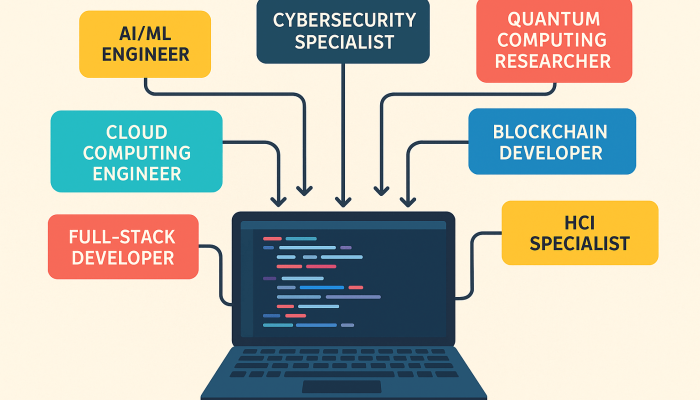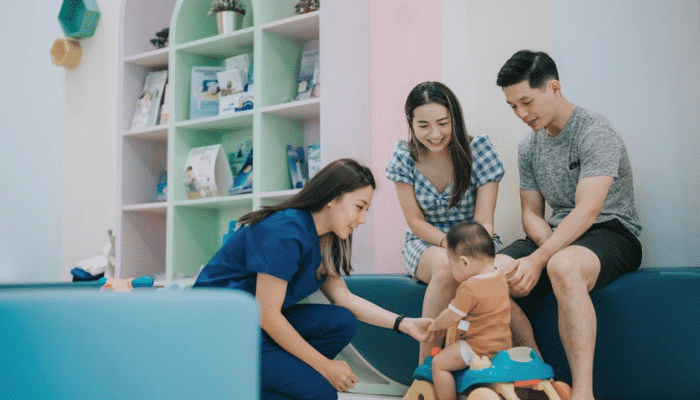Studying to become a registered nurse is extremely exciting. While there are many different career routes open for fully qualified and registered nurses across the US, the core principles are very much the same no matter your specialism.
Nurses study to help people get better, regain personal freedom, and retain hope in the healthcare system. There’s no better feeling than knowing you had a positive impact on someone’s health—and in many cases, nurses help to save lives.
To develop as nurses, people need exceptional communication, reasoning, and problem-solving skills. They can learn many of these skills online with the right college—but it’s important to learn in realistic settings, too.
In this article, we’ll take a look at why getting experience in a realistic or physical healthcare setting is a great idea if you want to become a registered nurse.
Why you need a balance of online and physical education
It’s never been easier to dive into nursing education. Online learning is making life easier in many ways—for example, nursing students can take on modules and complete coursework in their spare time while balancing busy lives and even gaining work experience.
Online education allows nurses from all over the country to take part in collaborative learning experiences. It breaks down barriers and helps people access resources and support they might not have been aware of. However, getting some hands-on experience in a physical and/or realistic healthcare setting is just as important.
Online learning helps nurses understand theoretical practice, and they can practice new skills with other students and mentors in roleplays. However, learning in a realistic setting helps students take those skills one step further and practice them in mock environments where they can demonstrate everything they’ve taken onboard without putting patients at risk.
Any prospective nurses looking to get into different branches of healthcare should first look into gaining a BSN. This is a degree that provides the knowledge and foundation nurses need to hit the ground running in any clinic or hospital environment.
ABSN programs, such as those hosted by Elmhurst University, will help students get into nursing even more efficiently while still covering the crucial knowledge and skill sets they’ll need to care effectively for patients. Elmhurst’s accelerated BSN program helps nursing students find placements alongside providing 625 clinical hours of study, so it’s definitely an immersive experience.
Before heading to clinics for real, it’s a good idea for nurses to gain some physical practice experience offline. They can do so, for example, by working in simulated environments or simulations.
What are nursing simulations?
As the name suggests, nursing simulations are mock environments in which student nurses can demonstrate the skills they’re developing in a physical setting. It’s an opportunity for students to gain confidence in their theoretical knowledge and learn more about how these physical skills will help them in the future.
Nursing simulations cover many different bases and emulate specific bodily functions and tracking, such as heart rate and blood pressure. In many simulations, nurses will work with advanced mannequins that offer realistic responses to physical care. Simulations often allow for environmental fidelity, too. This means they frequently provide the typical tools and devices a nurse would use in a specific healthcare setting. The idea, of course, is to represent a treatment scenario as closely as possible, whether in an emergency setting or otherwise.
Nursing simulations are becoming increasingly advanced as technology evolves, which means students can expect more realistic settings when learning in mock scenarios. However, learning on simulations is just as important as building up theoretical knowledge and teamwork, which students can develop through online study.
Nursing simulations also allow mentors and teachers to explore student competencies in person. That means, instead of judging a student’s capability purely through written coursework, they can see for themselves how a prospective nurse will react in specific situations.
Why do student nurses need realistic simulations?
We’ve extolled the virtues of online learning and simulation education briefly, but it’s important for us to learn more about the specific benefits of learning in a highly realistic setup.
Consider that there are benefits for students and teachers alike—and that the more realistic a simulation or learning experience, the better prepared a graduate nurse will be to handle complex challenges that await them.
Let’s look at some of the reasons why using realistic simulators in nursing education is so vital in the modern age.
It gives nurses confidence
While many nurses will feel confident through learning theoretical principles and applying them to written coursework and team-building exercises, there is no better way to prepare oneself for the real nursing experience than to step into a realistic mock environment. Here, while there will be pressure to apply your knowledge as efficiently and as accurately as you can, there is less pressure knowing you won’t be affecting hospital practices or patients’ lives.
That, and seeing your nursing knowledge manifest in physical treatment is incredibly empowering. It’s a chance for nurses to tell themselves that they “can do this”, as up to now, they will have been learning almost exclusively through guided tuition and from online and published resources.
Nurses who learn in realistic simulations will graduate with more confidence in their abilities to treat patients. Simulations are built to emulate real-life settings as closely as possible, imitating equipment and patient responses closely.
That means, once graduated, nurses can step into real clinics and expect a familiar environment. While they will now be dealing with real patients and will genuinely impact the hospital or clinic they’re employed at, stepping into such a setting won’t be jarring.
By the time nurses graduate and enter the workforce, they will have extensive study hours behind them, meaning they should feel empowered to start helping patients, confident that they have the skills and the knowledge to bring people back to full health.
It’s the best way to judge aptitude
While it is entirely possible to judge the competence of nursing students based on their responses to exam questions and written coursework tasks, it’s all the more important that teachers see how their students perform in practice. There’s no true way of knowing how a nursing student might adapt to a physical healthcare setting without seeing them perform in mock scenarios beforehand.
Practicing in a mock, realistic environment gives teachers and nurse educators confidence, too, that their students will graduate with practical skills alongside theoretical knowledge. For example, in a realistic simulation where a patient might be going into cardiac arrest, a teacher can judge a student on how they react during such an emergency—what tools do they use to help revive the patient? Do they work with others effectively? Do they use critical thinking and keep a cool head? Are they willing to look for creative solutions and lead their team toward them? These are all potential questions a teacher can ask while observing nurses during simulated tests. Ultimately, a competent nurse must be able to care for patients while thinking clearly and objectively.
Teachers can therefore provide feedback at the end of simulations and offer pointers to students who might be struggling. The more realistic the simulation, the more likely it will be that nurses react the same way to real-life emergencies. Realistic simulations provide fantastic teaching moments. The earlier these simulations take place, the sooner teachers can start to help students refine their practice and develop clinical reasoning skills.
It’s safer than practicing in a real hospital
While most nursing students will go on to develop in clinical placements at real-world hospitals and clinics, having the opportunities to work in a simulated environment prepares them for the real thing.
By providing a realistic facsimile of a ward or treatment room, students can learn and demonstrate skills without risking patient health and depleting healthcare resources. It’s likely many students will head to placements where they can work in real settings several months after working in simulations. This also helps to support student confidence, as mentioned above. A nursing student is likely to feel more confident demonstrating their skills in a simulation than they are working with real people, at least initially.
Regularly working in realistic simulations helps to build up this confidence, and there are no health risks involved.
It’s a good way to learn from mistakes
Nurses will always make mistakes while learning—it is, ultimately, part of the practice. The benefit of making mistakes in a realistic simulation is that students will have safety and support should they need to fall back on anyone for guidance.
While guidance and team support will be available in real-world nursing, there might not always be the freedom to expect people to back nurses up. This might especially be the case in critical and emergency procedures, where nurses must focus on the tasks at hand. That’s not to say they won’t have any support once working in a hospital—however, learning in a realistic simulation allows students to refer to tutors and classmates if they’re unsure about what to do next.
The technology used in modern simulations helps in this regard, too. For example, a realistic simulation of someone in surgery will likely have a heart monitor that responds to decisions students make. Alternatively, said monitor might respond randomly to test a student’s knowledge and ability to adapt to an emergency. This is a highly realistic touch, as there will be moments in real-life care and surgery where unexpected events occur. Therefore, it is better now, in a simulation, for nurses to make mistakes and learn from them.
At least, while it might not be possible to teach every single procedure they’ll come across when entering the workforce, nurses can learn, using simulations, how to bounce back from problems and will know what to do if they need to call for backup. Furthermore, teachers working in simulation environments will actively support their students but will also ensure they receive comprehensive feedback. Continued use of realistic simulations will further help students learn how to adapt to critical situations and how to bounce back in the event of a mistake or a growing emergency.
It’s a great opportunity to learn about different procedures and conditions
Again, while there might be thousands of different procedures one could learn while studying to become a nurse, realistic simulations at least give students a broad overview of what to expect after graduation.
In fact, there is an argument that students might learn a broader variety of skills and procedural basics compared to what they’d expect on placement. That’s largely because nursing education covers the foundations—if a nurse wants to develop down a specialist route, they can seek out additional training and attend specific placements.
For example, as part of a BSN, student nurses might learn how to handle blood work and support surgery in simulations, which are skills that may not be taught on placements. Realistic simulation learning, therefore, offers students the best opportunities to learn the “basics”. There’s no guarantee which cases might arise on placement, meaning that learning common realistic skills and how to use them in simulations is hugely beneficial.
It’s during this time that nurses will also start to develop their own models for clinical thinking, meaning they will start to build their own objective reasoning skills. Realistic simulations allow novice nurses to learn more about how they think and react in specific situations. It’s not always about which treatments to offer patients in need!
Teamwork and communication improve
Hospital and clinical care scenarios rely on communication. Nursing revolves around one’s ability to work closely with other people, whether that’s other people in a nursing team or specialists in a specific department or niche. Realistic simulations help nurses develop communication skills as multiple students will work together in the same scenarios, and at the same level.
The more realistic the scenario, the better-prepared nurses will be when handling real-life cases in teams. There’s no knowing who they might work with when they enter hospitals for the first time, meaning nurses must develop overall communication skills in a realistic mock situation where they can breathe and think.
Realistic simulations will often be students’ first experiences demonstrating the skills they’ve learned in person. Their classmates are likely to have the same experiences—simulations are opportunities to discuss problems and work together toward similar goals without judgment.
In realistic simulations, nursing students learn how to rely on one another in emergencies and learn why asking for help is important. It’s not always possible to attend to patients on your own, particularly when you need to handle urgent care.
Again, this is a great opportunity for teachers to observe how their students interact with each other. They will look closely at how specific students react to their sensory environments and how they work with each other to solve problems. They can then feedback individually and as a team, identifying which people show leadership skills and which seem happier to follow.
There won’t always be opportunities for graduates to learn and build communication skills while on placement or working for real. That said, as they will work with lots of different people in varying teams and departments, there will always be opportunities to learn and grow as they continue through their careers.
Why we need realistic nursing simulations
Realistic nursing simulations are a must for students to build self-confidence and practice their skills in safe, supportive environments where they can take their time to grow with other classmates.
For teachers, realistic simulations offer lots of insight into how their students will react in a variety of situations. They provide opportunities to back up coursework marking and therefore help them produce more well-rounded feedback.
For students, it’s also a good opportunity to ease themselves into nursing. Rather than leaping straight into real-world scenarios and patient cases, they can gain knowledge and appreciation for the process through advanced simulations. What’s more, they will learn alongside other students and develop communication skills to take further into their individual careers.
Crucially, nursing simulations—especially those that are highly realistic—help nurses learn as many essential skills as possible before they graduate. It’s a superb chance to explore the foundations of nursing, and even to explore potential options to specialize in the long term.
Nursing simulations give students a taste of real-world work without the pressure. While, in simulations, they will still need to work hard and show their skills and knowledge, they can rest easy knowing that they’re in a safe space and that there’s time, at least for a while, to develop before heading onto real-world scenarios.
Realistic simulations give student nurses a confident springboard from education to work which, in turn, helps to boost care standards, productivity, and patient outcomes.




